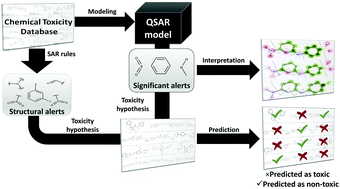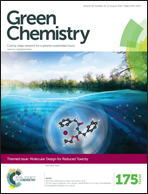Alarms about structural alerts†
Abstract
Structural alerts are widely accepted in chemical toxicology and regulatory decision support as a simple and transparent means to flag potential chemical hazards or group compounds into categories for read-across. However, there has been a growing concern that alerts disproportionally flag chemicals as toxic, which questions their reliability as toxicity markers. Conversely, rigorously developed and properly validated statistical QSAR models can accurately and reliably predict the toxicity of a chemical; however, their use in regulatory toxicology has been hampered by a lack of transparency and interpretability. We demonstrate that contrary to the common perception of QSAR models as “black boxes” they can be used to identify statistically significant chemical substructures (QSAR-based alerts) that influence toxicity. We show through several case studies, however, that the mere presence of structural alerts in a chemical, irrespective of the derivation method (expert-based or QSAR-based), should be perceived only as hypotheses of possible toxicological effect. We propose a new approach that synergistically integrates structural alerts and rigorously validated QSAR models for a more transparent and accurate safety assessment of new chemicals.

- This article is part of the themed collection: Molecular Design for Reduced Toxicity

 Please wait while we load your content...
Please wait while we load your content...